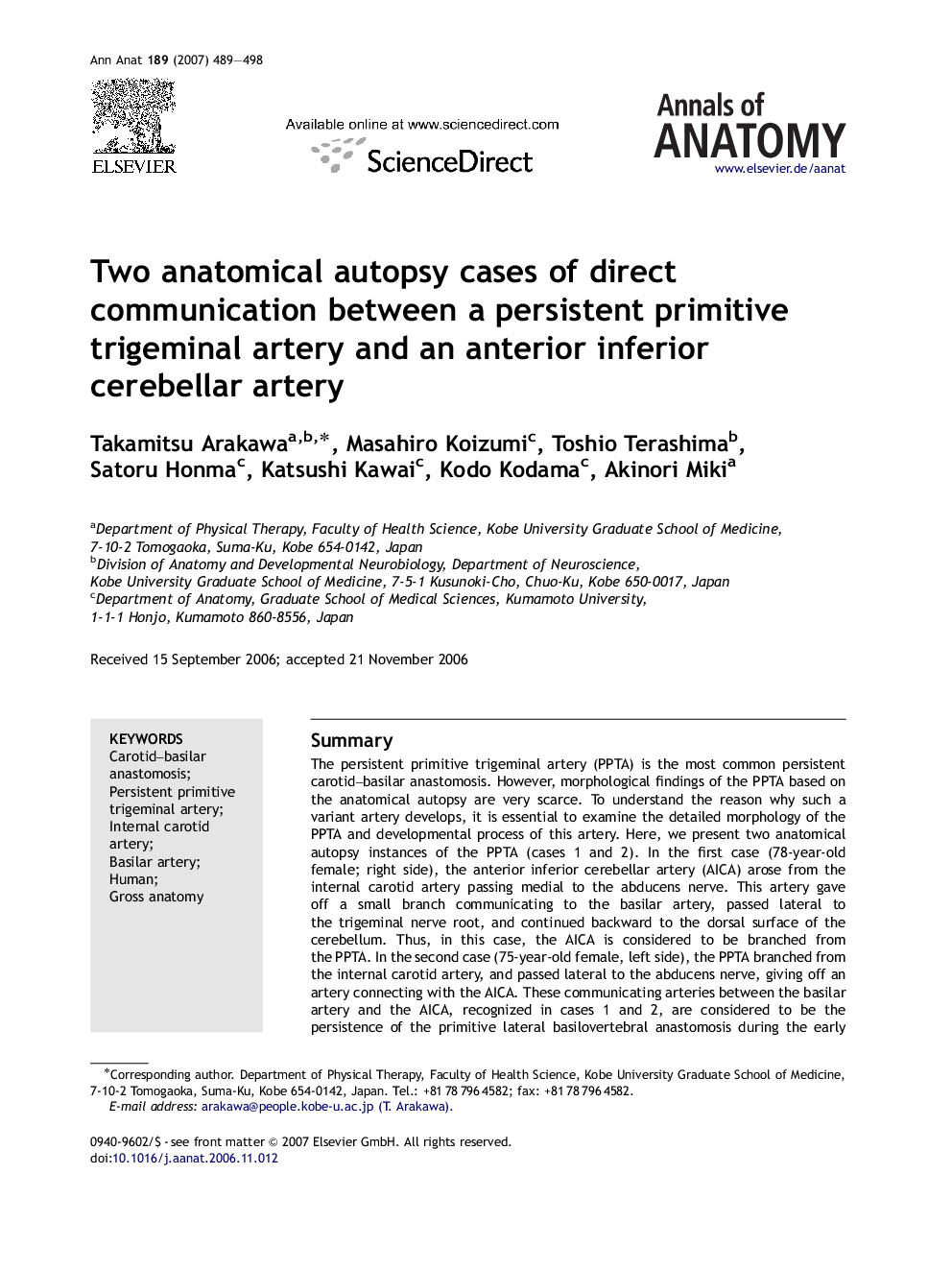| Article ID | Journal | Published Year | Pages | File Type |
|---|---|---|---|---|
| 8462886 | Annals of Anatomy - Anatomischer Anzeiger | 2007 | 10 Pages |
Abstract
The persistent primitive trigeminal artery (PPTA) is the most common persistent carotid-basilar anastomosis. However, morphological findings of the PPTA based on the anatomical autopsy are very scarce. To understand the reason why such a variant artery develops, it is essential to examine the detailed morphology of the PPTA and developmental process of this artery. Here, we present two anatomical autopsy instances of the PPTA (cases 1 and 2). In the first case (78-year-old female; right side), the anterior inferior cerebellar artery (AICA) arose from the internal carotid artery passing medial to the abducens nerve. This artery gave off a small branch communicating to the basilar artery, passed lateral to the trigeminal nerve root, and continued backward to the dorsal surface of the cerebellum. Thus, in this case, the AICA is considered to be branched from the PPTA. In the second case (75-year-old female, left side), the PPTA branched from the internal carotid artery, and passed lateral to the abducens nerve, giving off an artery connecting with the AICA. These communicating arteries between the basilar artery and the AICA, recognized in cases 1 and 2, are considered to be the persistence of the primitive lateral basilovertebral anastomosis during the early embryological period. We propose that the primitive lateral basilovertebral anastomosis forms the arterial network around the trigeminal nerve root, and the AICA develops through this anastomosis.
Related Topics
Life Sciences
Biochemistry, Genetics and Molecular Biology
Cell Biology
Authors
Takamitsu Arakawa, Masahiro Koizumi, Toshio Terashima, Satoru Honma, Katsushi Kawai, Kodo Kodama, Akinori Miki,
